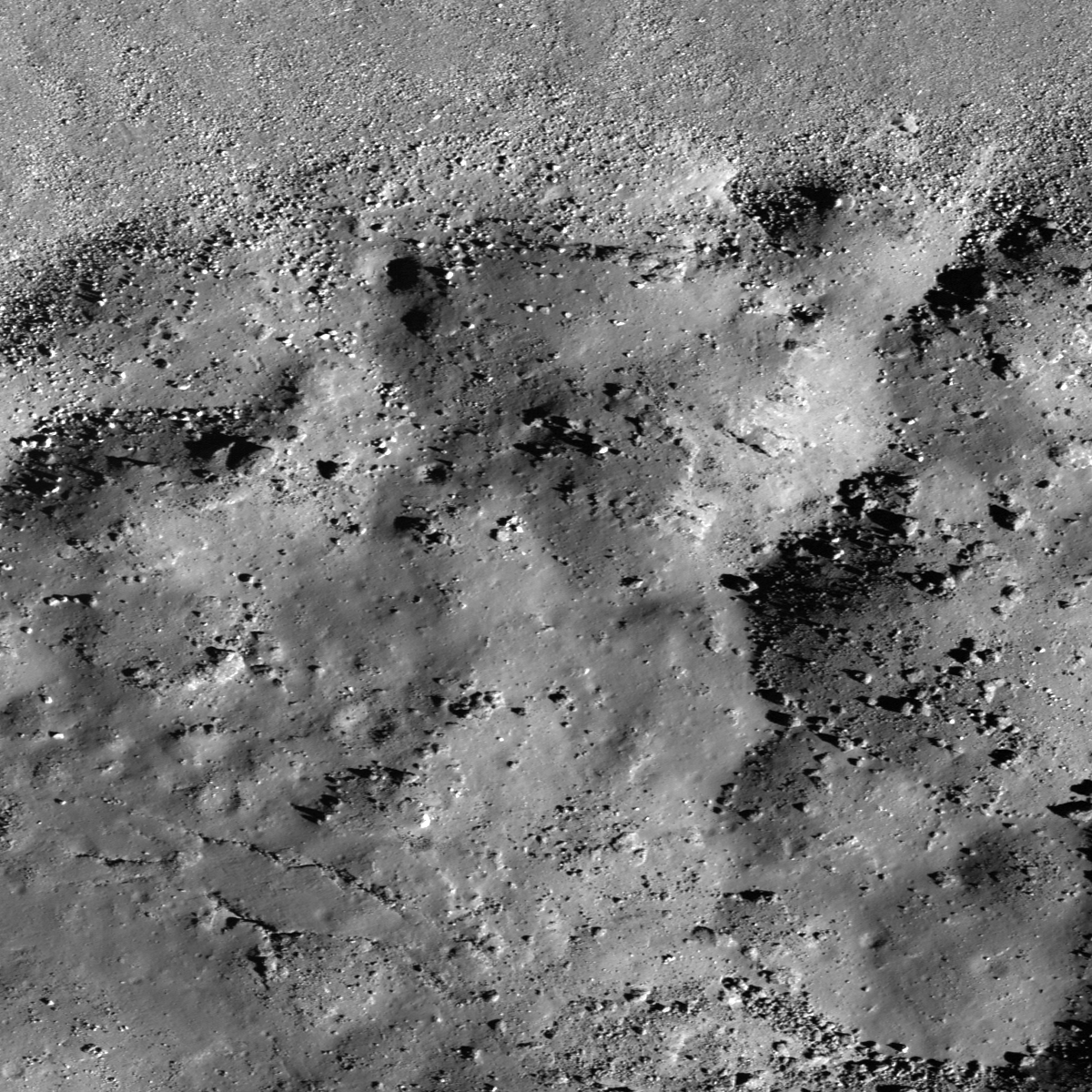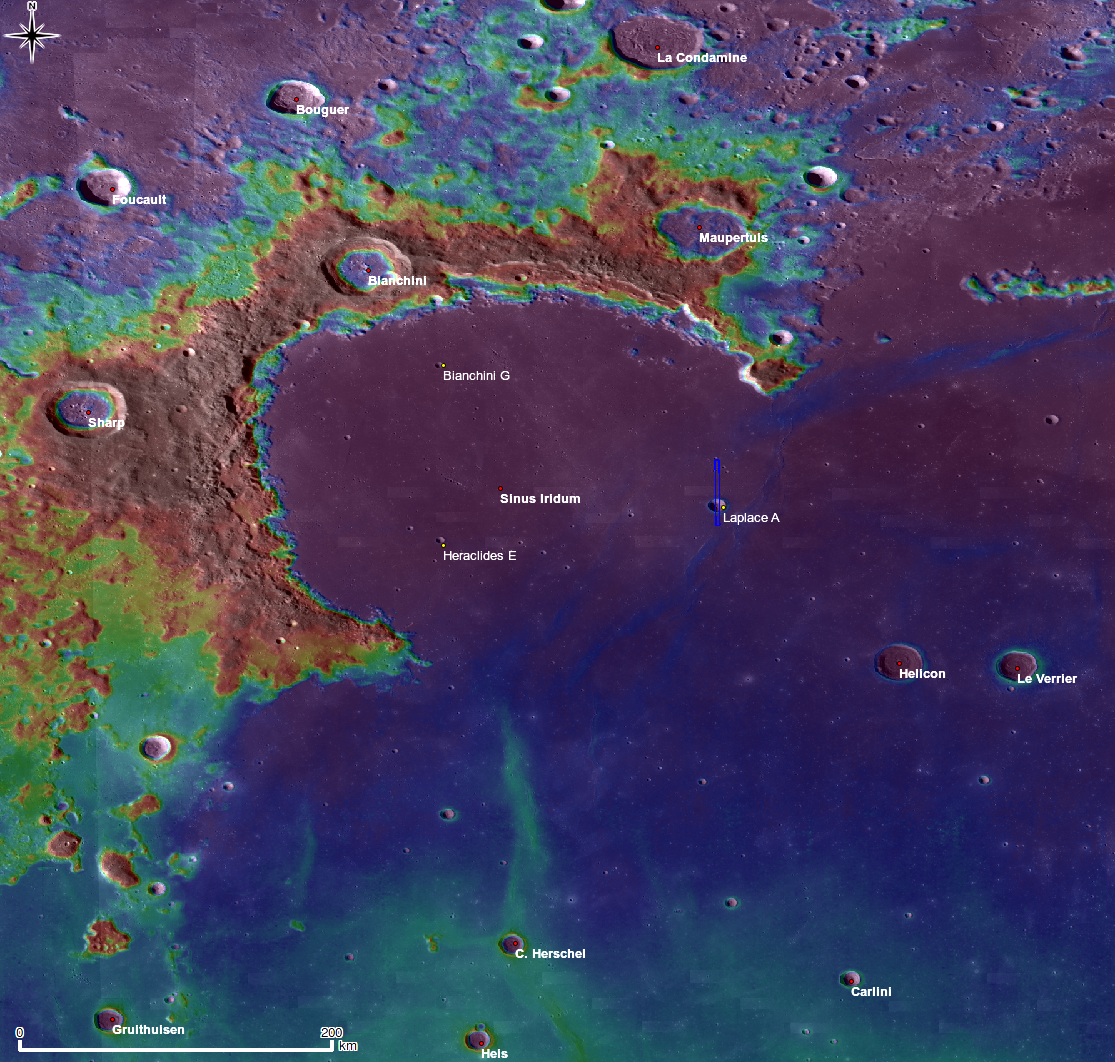
During an impact event the kinetic energy of the meteorite is dissipated by compression, fragmentation, excavation and launching rock debris -- all resulting in an impact crater. The large amount of energy released also melts some of the target rock, and often times impact melt ponds form in the floor of the crater. Since the impact melt is liquid, it seeks an equi-potential level (surface is perpendicular to the gravity vector), thus it is flat and smooth as it freezes.
Today's Featured Image reveals the bottom of Laplace A crater, specifically the north edge of its impact melt pond. The upper side of this image corresponds to the lower part of crater wall, covered by lots of boulders. The surface of this melt pond consists of dozens of low mounds, possibly due to deformation of the pond surface after partial solidification. Perhaps rebound of the crater floor caused the level of molten material beneath the crust to rise and create small breakouts to the surface. There is also a cone shaped depression near these mounds. It may have formed as magma drained out from below?
Explore lunar melt ponds by viewing the full NAC frame!
The topographic color was produced as a by-product of stereo analysis of the WAC global dataset. Producing the global Digital Elevation Model (DEM) is a big job being led by LROC team members at the German Aerospace Center (DLR; English version) in Berlin.
Related Featured Images:
Impact melt features in Tycho crater's floor, The Floor of Tycho - Constellation Region of Interest, Central Peak of Rutherfurd, More Impact Melt!
Published by Hiroyuki Sato on 24 February 2011
